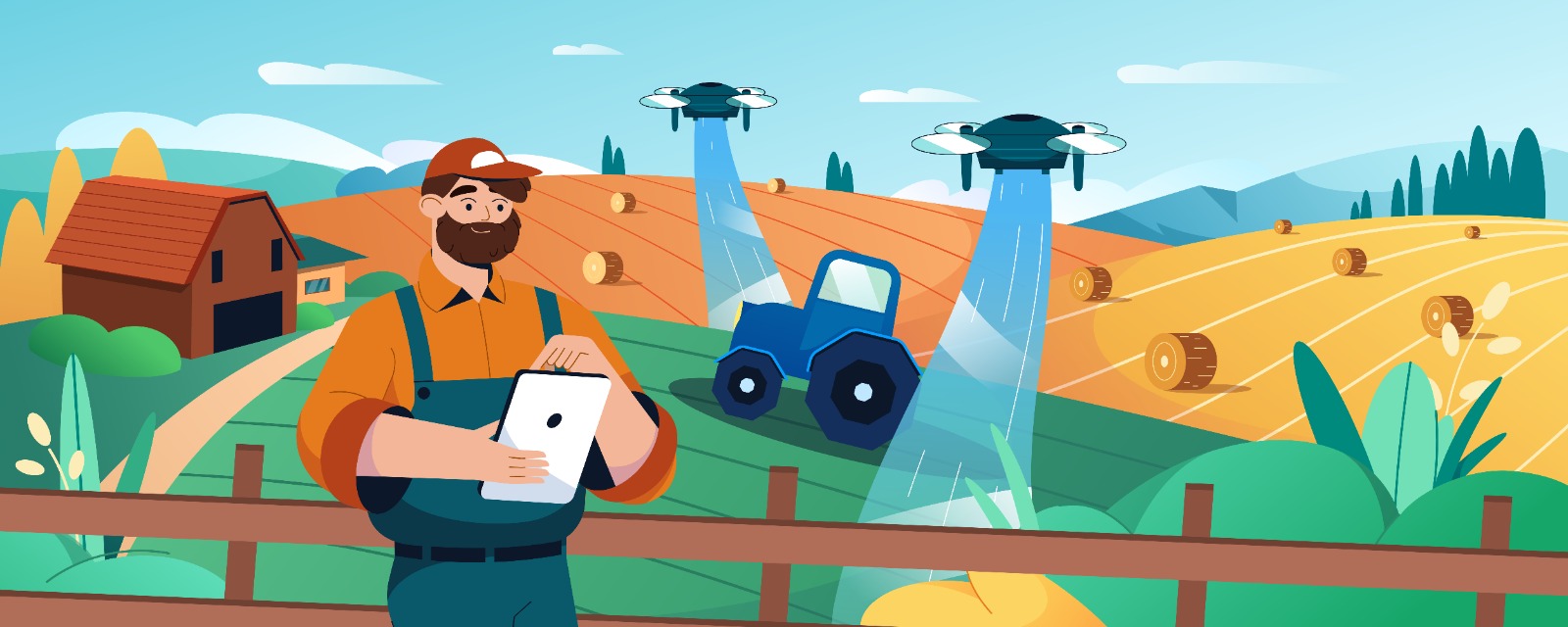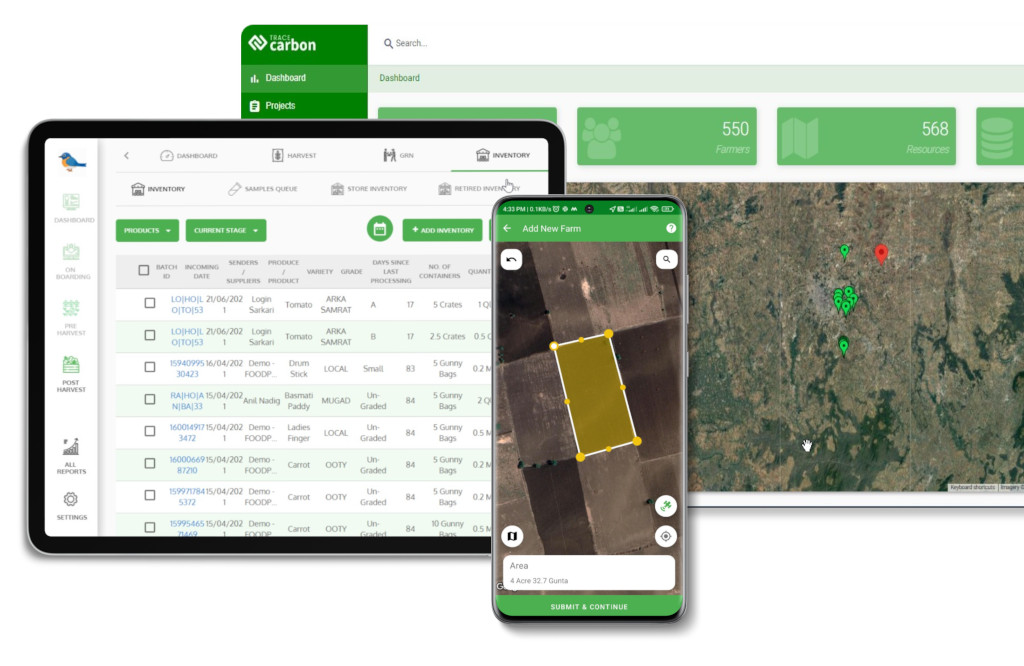Contact: +91 99725 24322 |
Menu
Menu
Quick summary: Farmers face challenges in managing scattered and unstructured farm data, leading to inefficiencies and compliance risks. Learn how digital solutions can transform farm data management for better productivity and sustainability.

You’ve just finished a harvest, but when it’s time to analyze yield data, track input costs, or report compliance metrics to your buyers, you’re stuck flipping through handwritten notes or messy spreadsheets. Sound familiar? Farm Data management is complicated.
Did you know that 80% of farmers and contract growers struggle with managing their farm data, leading to inefficiencies, missed opportunities, and lost revenue?
Farmers collect tons of critical data every season—weather reports, soil health records, fertilizer usage, crop yields, and fluctuating market trends. But the problem? There’s no structured system to organize, analyze, or use this data effectively. For contract farmers, the challenge is even bigger. Agribusinesses demand real-time traceability, precise data for compliance, and efficient supply chain management—but without digital tools, farmers struggle to meet these expectations.
A digital farm management system can turn scattered, unstructured farm data into powerful insights—helping independent and contract farmers streamline operations, improve yields, and maximize profits.
Key Takeaways
Farming today isn’t just about planting, watering, and harvesting—it’s about making smart decisions based on real-time data. Whether you’re a smallholder farmer or a contract grower, you need to track:
But here’s the problem—managing all this information manually is nearly impossible. Many farmers still rely on notebooks, spreadsheets, and memory to track their farm activities. The result? Missed opportunities, inefficiencies, and lost profits.
Farmers and contract growers are constantly collecting data, but most of it sits unused or gets lost in scattered records.
Many farmers still use pen and paper, notebooks, or spreadsheets to track farm activities. While this may have worked in the past, today’s farming landscape is much more data-driven and competitive.
The problems with manual tracking:
For contract farmers, this can be a huge issue. Agribusinesses require precise, digital reports on compliance, input usage, and sustainability. If you can’t provide this data, you risk losing contracts.
✔ Automates record-keeping—log data with a few taps on your phone.
✔ Tracks inputs, outputs, and financials without manual entry.
✔ Generates compliance reports in seconds, making contract farming easier.
Farmers collect data from multiple sources:
But the issue? None of these systems talk to each other—leading to fragmented, unstructured data. Farmers end up switching between multiple platforms or relying on gut feeling instead of real-time analytics.
✔ Integrates all farm data into a single dashboard.
✔ Provides real-time insights based on combined data from multiple sources.
✔ Predicts weather, crop health, and market trends, helping farmers make better decisions.
Farmers often sell their produce at the wrong time because they don’t have access to real-time market trends.
The result?
For contract farmers, it’s even more complex. They need to follow:
But without a digital traceability system, meeting these standards is nearly impossible.
✔ Provides real-time price alerts to help farmers sell at the best time.
✔ Automates compliance tracking so contract farmers can meet regulations effortlessly.
✔ Generates digital reports for agribusiness partners, making contract farming stress-free.
Managing a farm shouldn’t feel like running a corporate data center, but for many farmers and contract growers, that’s exactly the challenge. So much information—so little time to organize it.
That’s where a digital farm management system comes in. Think of it as your farm’s personal assistant—keeping track of everything from weather forecasts and soil health to market prices and compliance reports. And the best part? It works automatically, so you don’t have to!
Imagine having one place where you can see everything about your farm—weather updates, soil conditions, machinery performance, and market trends—all at a glance. No more digging through multiple apps, notebooks, or spreadsheets!
How It Works:
✔ Gathers data from multiple sources—IoT sensors, weather reports, machinery, and even market prices.
✔ Organizes it into a single, easy-to-use dashboard.
✔ Updates in real-time so you’re always working with the latest information.
Benefit: Instead of guessing, you’ll be making data-driven decisions instantly—helping you optimize crop cycles, reduce waste, and increase yields.
Imagine if your farm could predict the best time to plant, irrigate, or protect against pests—all based on real-time data and AI-driven insights.
How AI Helps Farmers:
✔ Finds the best planting & harvesting windows based on weather patterns and soil conditions.
✔ Optimizes irrigation schedules to reduce water usage while ensuring healthy crops.
✔ Detects early signs of pests or diseases so you can take action before it’s too late.
Benefit: AI removes the guesswork from farming, helping you increase productivity while cutting down on wasted inputs like water, fertilizers, and pesticides.
You don’t need to be a tech expert to use a farm management system. The best ones are mobile-friendly, intuitive, and designed for farmers
How It Works:
✔ Access weather updates, soil reports, and farm analytics from your phone or tablet.
✔ Receive real-time alerts about changes in market prices, disease outbreaks, or compliance deadlines.
✔ Enter data on the go, whether you’re in the field, at a market, or in a meeting with buyers.
Benefit: You don’t need to be at a desk to manage your farm. Everything you need is in your pocket, available anytime, anywhere.
For contract growers, compliance is one of the biggest headaches. Agribusinesses and buyers demand accurate records on everything—what fertilizers you used, when crops were treated, and how products were stored. Manually tracking all this? Nearly impossible.
How Automation Helps:
✔ Tracks input usage (fertilizers, pesticides, irrigation cycles) automatically.
✔ Stores digital records of production data for audits & contract reporting.
✔ Ensures traceability for compliance with global food safety and sustainability standards.
Benefit: Meeting agribusiness requirements becomes effortless—no more scrambling to gather reports last minute.
Green Earth adopts TraceX’s blockchain-powered traceability solutions to ensure food safety, quality, and transparency in fresh produce. By digitizing supply chain processes, they enhance efficiency, streamline operations, and build consumer trust.
Know More

Agribusinesses and contract farmers operate in complex supply chains where efficiency, compliance, and sustainability are crucial for profitability and market access. TraceX’s farm management platform transforms farming operations by providing real-time, data-driven insights that optimize productivity, improve traceability, and ensure seamless regulatory compliance.
Effective farm data management is no longer a luxury—it’s a necessity for modern agriculture. By leveraging digital tools and automated solutions, farmers can overcome data silos, improve decision-making, and enhance productivity. Investing in the right farm data management system ensures transparency, efficiency, and long-term sustainability in the agricultural value chain.
Farm data management helps farmers track inputs, yields, and sustainability metrics, ensuring better planning, compliance, and profitability.
Farmers struggle with fragmented records, lack of digital tools, and difficulty in integrating data across different processes.
Digital platforms and blockchain-based traceability solutions enable real-time data collection, automated reporting, and seamless compliance tracking.
